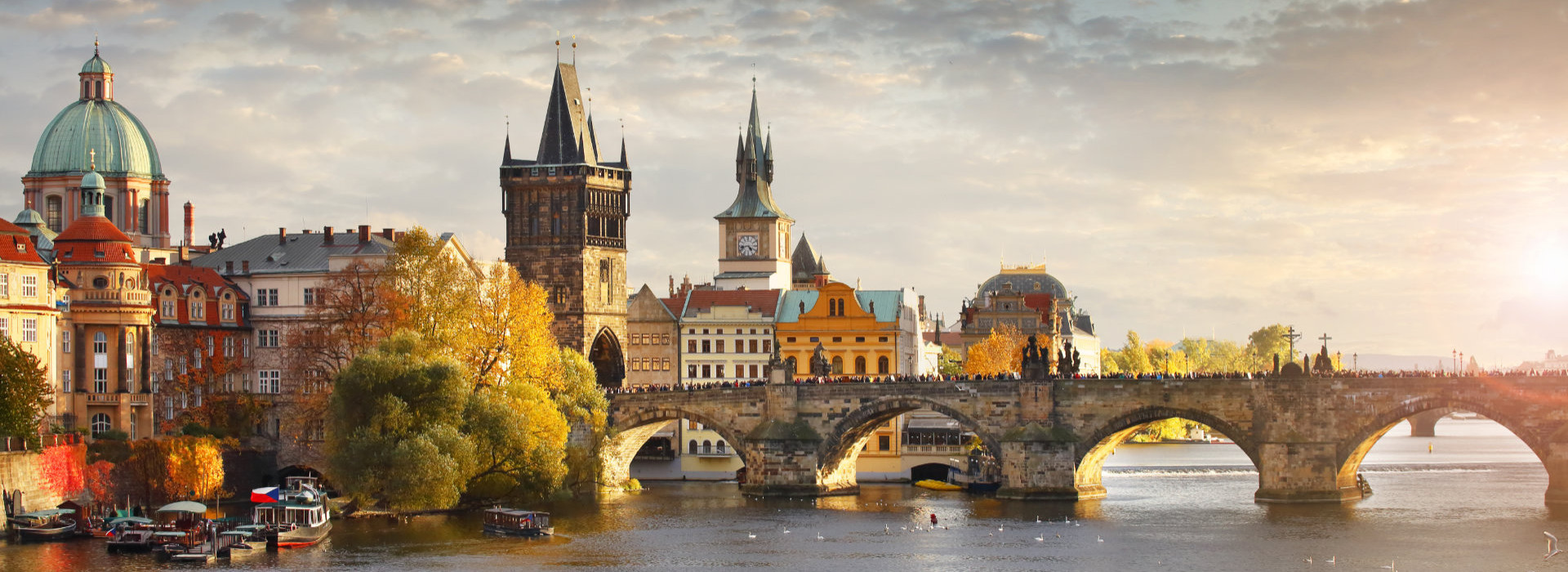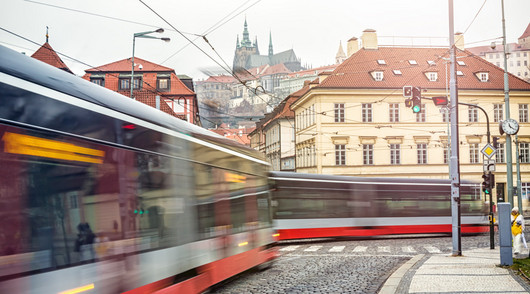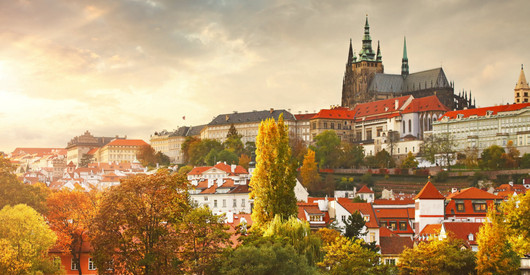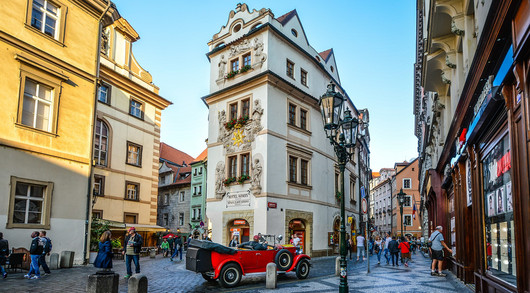
Is Prague called the “Golden City” because it once was full of church spires made from real gold or because its roofs have a golden shine in the light of the setting sun? Historians are divided, but one thing is certain. The capital of the Czech Republic is a genuine treasure amongst major European cities and thanks its historic old town is worth at least as much in gold as its commercial and cultural wealth. Nevertheless life in Prague does not have to be sophisticated, but tends to reflect a pleasantly acceptable lightness. Music and architecture, literature and history are just as omnipresent here as the Vltava River, which our Prague employees can walk to from our company premises in just a few minutes.

“The City of a Hundred Spires” or “Golden City” – anyone describing Prague, the capital of the Czech Republic, soon goes into raptures. As well as the towers and roofs illuminated in the evening sunset, it is the Vltava that is emblematic of the cityscape and of life in the Eastern European metropolis. The approximately 1.3 million inhabitants are spread over 22 administrative districts. Daytime tourists of course tend to remain in the historic city center that is picturesquely embedded on the south bend of the Vltava loop. Due to its location and ever since the emotional upheavals in East and West, Prague has developed into an important commercial center and transportation hub within Europe. Four motorways meet here. Trunk roads, stations and airports as well as an inland port complete the excellent transportation connectivity of the capital to long-haul transportation. There is also a very good public transportation system in and around Prague.

A visit to the historic old town of Prague, which has been distinguished by UNESCO as a World Heritage Site, generally starts on the famous Charles Bridge. Early risers will experience the unique view of the city and the hill at sunrise. The Powder Gate and Prague Castle, Town Hall Clock and Wenceslas Square are just some of the attractions that nobody wants to miss in the Golden City inspired by Gothic and Baroque architecture. But the buildings of Prague do not only tell the stories of the nobility and medieval masters, the colorful graffiti of the John Lennon Wall also reflects the hopes of the Prague youth for a life of freedom and peace. Tourism to Prague is an important economic factor that is contributing to the advancement of the modern development of the city.

Anyone who stays in Prague longer than for a short stop-over will notice that the city has just as much to offer as a place to live with a high quality of life as it does as a party destination. Despite its popularity with European immigrants and emigrants it is relatively easy to rent a suitable apartment or house. The architecture, parks and gardens in all the city's districts invite you to go for a stroll and linger for a while. The restaurants in the old town in particular offer an amazing view whilst you are eating. And anyone who succeeds in overcoming the initial reserve of some Prague inhabitants will soon get to know them as the kind-hearted hosts and sociable people that they are.
Whether you are only temporarily in the city or you already have your removal van with you, Prague inspires visitors through the openness and friendly nature of its inhabitants – which is not necessarily a given in a large city that registered about 50 million overnight stays in its hotels and guest houses in 2017. Yet alongside the tourist metropolis there is another Prague where good Czech beer is poured for a ridiculously low price, a city that knows how to appreciate modern cabaret just as much as its historical legacy and one that has developed into a guarantor of European cohesion.